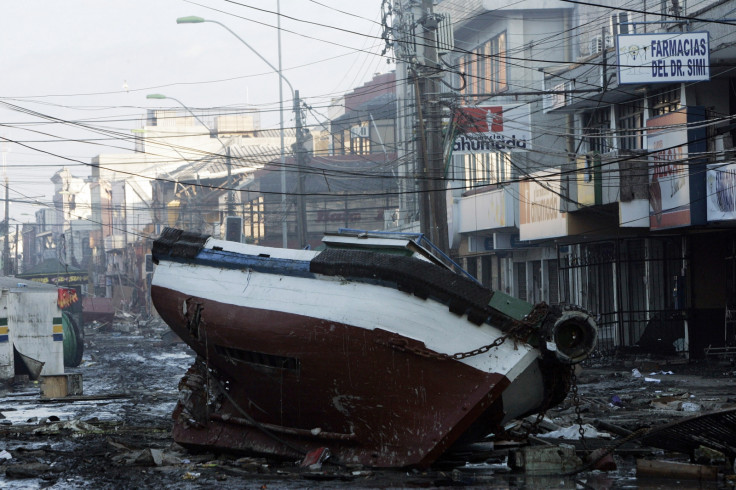Great Chile earthquakes pushed land up over 3m since 1835

Two great earthquakes in Chile 175 years apart pushed an island off the central coast up by at least three metres, scientists have said.
Researchers from the US Geological Survey were looking at the vertical movement of land on Isla Santa Maria following two great earthquakes in Chile – a magnitude 8.5 in 1835 and a magnitude 8.8 in 2010.
When tectonic plates are locked together, strain builds over time until it is suddenly released and the plates slip past each other – an earthquake. Researchers believe that these events cause the Earth's surface to rise and fall cyclically – but exactly how this happens is unknown.
Publishing their findings in the journal Nature Geoscience, Robert Wesson and colleagues note that written records of earthquakes in Chile reach back to the mid-1500s. Isla Santa Maria is located 80km off the Chile Trench and sits 20km above the subduction zone.
The island was visited by Captain Robert FitzRoy and the HMS Beagle – during Charles Darwin's journey – a few weeks after the 1835 earthquake struck. FitzRoy estimated the land had risen between 2.4 and three metres during the earthquake by measuring the inter and sub-tidal sea life attached to rocks.
"The earthquake of 1835 raised the bottom nearly 9 feet [2.7 m]; so that's where there was a depth of 5 fathoms [9.1 m] in 1834, the Beagle found only 3.5 [6.4 m] in 1835," he wrote. Almost two centuries later, another great earthquake hit, leading to the island being uplifted by between 1.6m and 2.2m.

Researchers analysed nautical surveys from 1804, 1835, and 1886 along with modern surveys, and Current Population Survey data to evaluate the vertical movement of Isla Santa Maria during the complete cycle between the two earthquakes.
Findings show it subsided by just 1.4m during the 175 years between the two great earthquakes and that subsidence did not occur at a uniform rate. This suggests that between 10% and 20% of earthquake induced uplift could be "permanent deformation".
In an accompanying News & Views article, Aron J. Meltzner, from the Earth Observatory of Singapore, Nanyang Technological University, said the study agrees with the basic theory of how Earth's crust should behave following an earthquake – but shows the process is more complicated than once thought.
He said that it is not clear whether these changes are representative of other locations, but that "such variations in fault behaviour — transient between weakly and strongly coupled — may be more common than previously realised".
"The approach of Wesson and colleagues could be used to determine strain accumulation and thus to quantify the amount of slip waiting to occur on a fault (the slip deficit) - a potentially useful tool for anticipating impending large earthquakes.
"The analyses of Wesson and colleagues reveal that deformation of the Earth's crust at subduction zones can vary over time. The underlying faults may behave in ways that are more complicated than previously recognised and our assumptions about time-dependent earthquake hazards may need to be reassessed," said Meltzner.
© Copyright IBTimes 2025. All rights reserved.






















